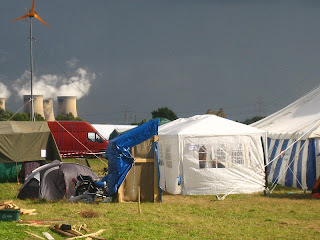INFORMATION OF GLOBAL WARMING
Elevated carbon dioxide emissions from industries, factories, vehicles etc. have contributed to the greenhouse effect, causing warmer weather that lasted long after the atmospheric shroud of dust and aerosols had cleared. Further climatic changes 20 million years ago, long after India had crashed into the Laurasian landmass, were severe enough to cause the extinction of many endemic Indian formsThe formation of the Himalayas resulted in blockage of frigid Central Asian air, preventing it from reaching India; this made its climate significantly warmer and more tropical in character than it would otherwise have been
Elevated emissions from industries, factories, vehicles etc. have contributed to the, causing that lasted long after the atmospheric shroud of dust and aerosols had cleared. Further climatic changes 20 million years ago, long after
India had crashed into the landmass, were severe enough to cause the extinction of many endemic
Indian forms. The formation of the Himalayas resulted in blockage of frigid Central Asian air, preventing it from reaching
India; this made its climate significantly warmer and more tropical in character than it would otherwise have been. The effects of
on vary from the submergence of low-lying islands and coastal lands to the melting of in the Indian Himalayas, threatening the of many of the most important rivers of In India, such effects are projected to impact millions of lives.
As a result of ongoing the as become increasingly volatile over the past several decades; this trend is expected to continue
The first among the countries to be affected by severe climate change is
Bangladesh. Its sea level, temperature and evaporation are increasing, and the changes in precipitation and cross boundary river flows are already beginning to cause drainage congestion.
There is a reduction in fresh water availability, disturbance of morphologic processes and a higher intensity of flooding and other such disasters.
Bangladesh only contributes 0.1% of the world’s emissions yet it has 2.4% of the world’s population.
In contrast, the
United States makes up about 5 percent of the world's population, yet they produce approximately 25 percent of the pollution that causes global warming.
If severe climate changes occur,
Bangladesh will lose land along the coast line This will be highly damaging to Bangalies especially because nearly two-thirds of Bangladeshis are employed in the agriculture sector, with rice as the single-most-important product.
The economy has grown 5-6% over the past few years despite inefficient state-owned enterprises, delays in exploiting natural gas resources insufficient power supplies, and slow implementation of economic reforms. However,
Bangladesh remains a poor, overpopulated, and inefficiently governed nation. f no further steps are taken to improve the current conditions global warming will affect the economy severely worsening the present issues further.
[
























